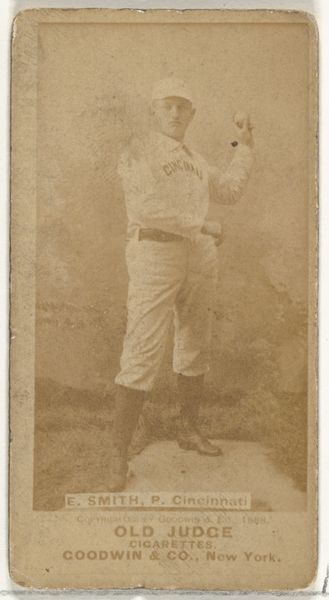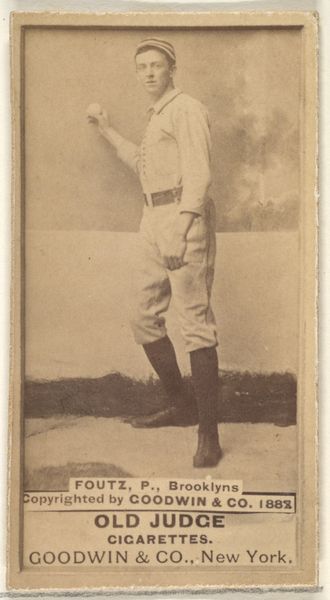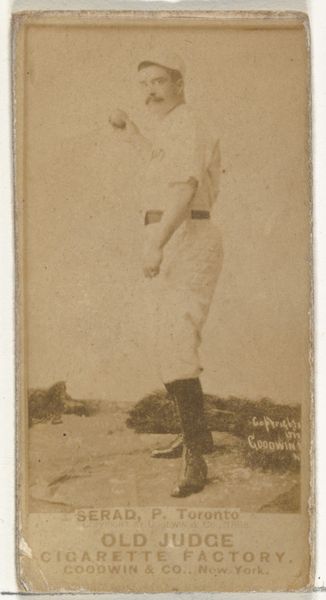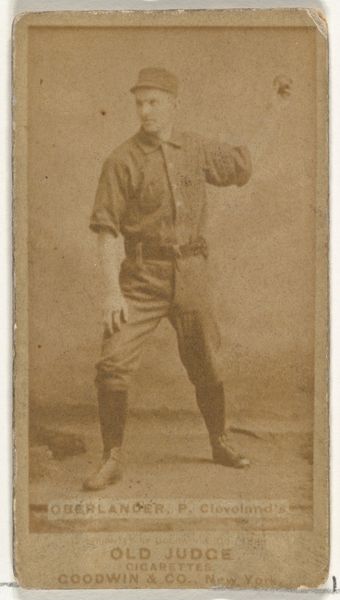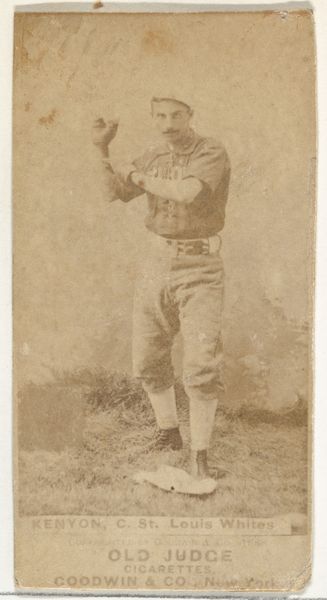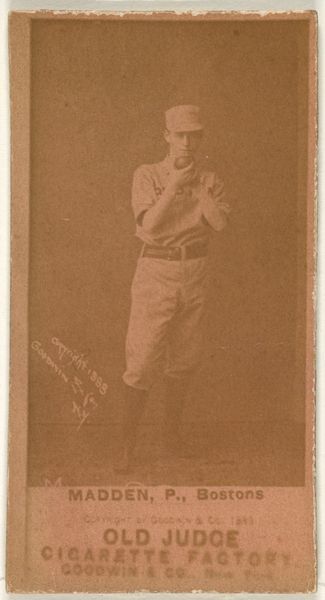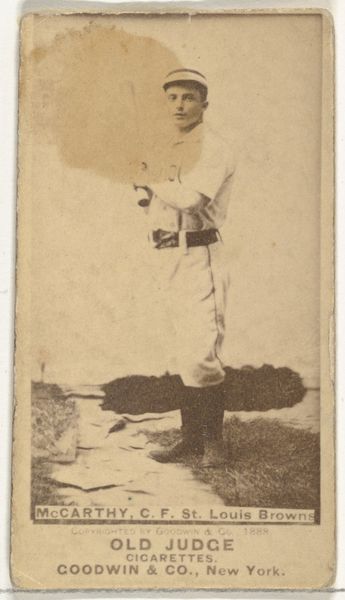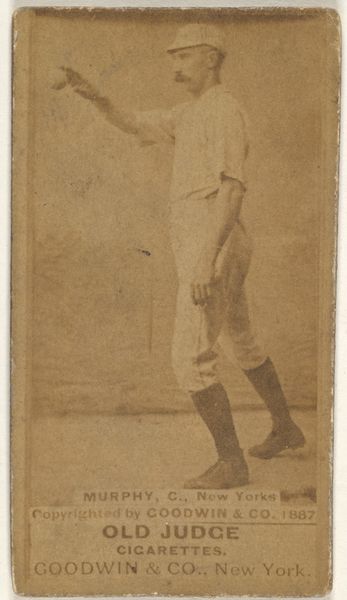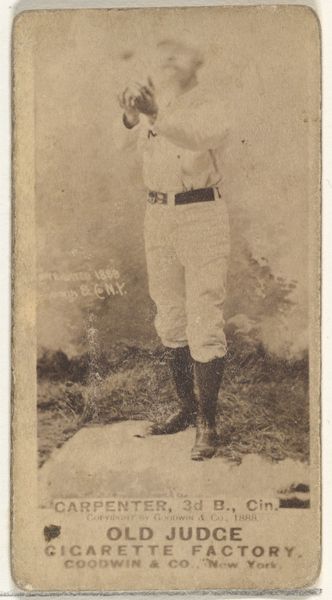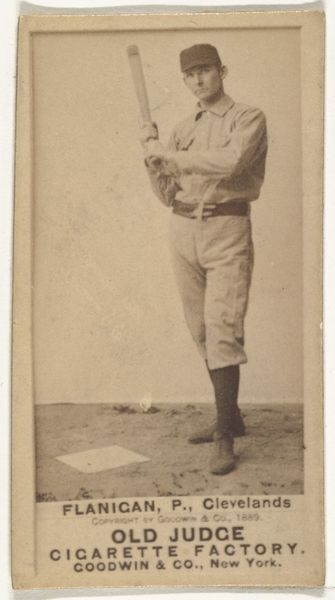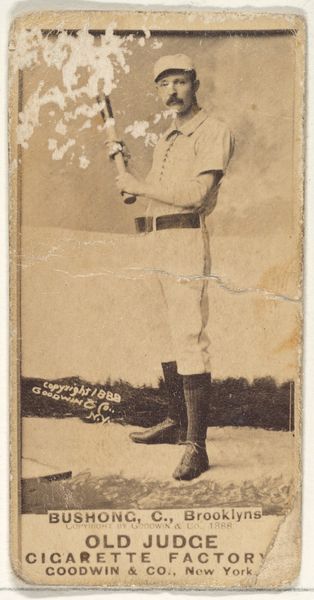
Gil Hatfield, Shortstop, New York, from the Old Judge series (N172) for Old Judge Cigarettes 1888
0:00
0:00
drawing, print, photography
#
portrait
#
drawing
# print
#
photography
#
genre-painting
Dimensions: sheet: 2 11/16 x 1 3/8 in. (6.9 x 3.5 cm)
Copyright: Public Domain
Curator: This portrait exudes an almost melancholic feeling, doesn't it? There's a stillness and solemnity to Gil Hatfield’s pose. Editor: Indeed. This is “Gil Hatfield, Shortstop, New York, from the Old Judge series (N172) for Old Judge Cigarettes.” Dating from 1888, the work is a print made by Goodwin & Company. It resides now here at the Metropolitan Museum of Art. What I find truly remarkable is its origins—created as promotional material for cigarettes. Curator: Right. So you have photographic imagery transformed into a print, itself functioning as capitalist product. And what sort of labor went into it, considering its mass-produced nature? We also see that, unlike modern trading cards printed in vibrant colors, the monochromatic, almost sepia-toned palette lends it a certain aged gravitas. Editor: Precisely! It reveals much about the booming tobacco industry and the cultural embrace of baseball at the turn of the century. These cards were, in effect, miniature billboards for a rapidly expanding market. Think about how a sport became deeply entangled with industrial production and commercial promotion. Curator: And consider the artistry embedded within the constraints of a product, in this case baseball cards: the attention to detail in his uniform and the player's posture and the selective highlighting using drawing techniques added to the photoprint. Are these details supposed to make smoking feel vigorous? Editor: More than vigorous, it makes smoking feel mainstream, familial. After all, baseball already had roots deep in New York working-class immigrant communities. Placing baseball and baseball players on cigarettes was meant to capitalize on a pre-existing bond with its consumer. The Old Judge brand was aiming for cultural hegemony, tying in themes of "Americanness" to promote consumption of harmful products. Curator: So, by exploring a seemingly simple baseball card, we begin to see connections of social, industrial, and material conditions inherent in cultural production. Editor: It’s amazing how a humble little piece of commercial ephemera opens up a broader conversation about societal trends. Curator: Exactly. Now, I am keen to compare it with similar ephemera pieces. Editor: That's something to consider in another analysis.
Comments
No comments
Be the first to comment and join the conversation on the ultimate creative platform.
